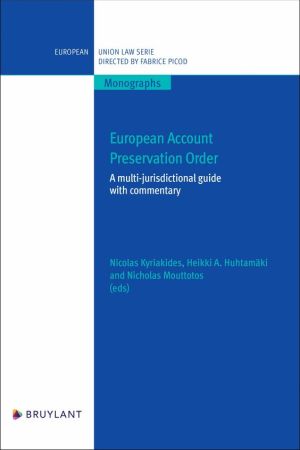
This new book on the European Account Preservation Order offers a multi-jurisdictional guide of the Regulation, examining the national operation and implementation of the Regulation establishing the Order in the EU Member States. In that aspect, it is unique since it provides insights from the 26 Member States (not applicable in Denmark) on how the EAPO has been implemented by the legislature and applied by the courts, building upon the work undertaken by the EFFORTS project.
The EAPO has been established in order to facilitate cross-border debt recovery in civil and commercial matters by offering an alternative to the national protective measures within the EU. While provisional measures exist in all national legal systems of the EU with the purpose of preserving a factual or legal situation so as to safeguard rights, the conditions for obtaining them are extremely heterogeneous. The data collected in this book show that the implementation of the EAPO leads to divergent interpretations, something that the decisions of the Court of Justice of the European Union will remedy in the future.
Part I of the book provides the background and the research questions addressed and gives a brief overview on whether the EAPO -seven years after the Regulation became applicable- is fulfilling its purpose of facilitating cross-border debt recovery in civil and commercial matters.
Part II of the book deals with the application and enforcement of the EAPO in the Member States. Each contribution by the expert from the respective jurisdiction analyses how a litigant can apply and enforce an EAPO in the Member State and examines any existing case law. In addition, each contribution describes any other methods that are in place to obtain bank account information outside and within the context of the EAPO. Part III of the book provides an outlook for the day after with an examination of the EAPO and the common law practice and a synopsis of the application of the EAPO in the Member States.
This book is an essential guide for practitioners seeking to use the Regulation; is an important source for the EU lawmaker in assessing a potential recast to the Regulation; as well as a source of information for the comparative scholars of international civil procedure.